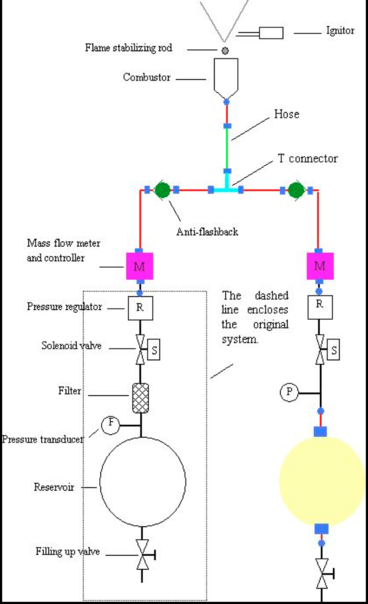flamestructure of premixed v-shape flames (V-SHAPE)

research area: combustion
experiment title:
Flamestructure of Premixed V-Shape Flames
experiment acronym: V-SHAPE
funding agency: DLR
grant number: -
performing organization:
ZARM, Universität Bremen
prime investigator: Christian Eigenbrod
experiment objective
abstract
Flame-flow interaction is crucial to the application of combustion. The flow field in which a flame is embedded depends on not only the coming flow but also the flame itself. Flame-generated flow will determine how the flame changes the flow field. Buoyancy is an instinctive feature of flames and will induce flow. To study how buoyancy influence flames will lead to better understanding on the mechanism of flame-flow interaction. CH4-Air premixed V-flames of wrinkled flame fronts were studied in 1g0 and μg experiments to observe buoyancy influence. In assistance to the experiments, the mechanism of buoyancy influence on V-flames was analyzed and the ratios of buoyancy force to corresponding dynamic force in the coming flow were estimated.
The experiment was done in the Bremen Drop Tower and OH-PLIF was used in both 1g0 and μg to record the instantaneous flame fronts. The results show that buoyancy effect on the laminar flame differs form that on the turbulent flame. This suggests the existence of the buoyancy influence on flame wrinkling and the coupling between buoyancy and the coming flow. Another observation is that the laminar exhibited wrinkles in μg and this implies that μg is an ideal environment for the study of both buoyancy influence and other mechanisms generating flow in flames.
related publications
- Y. Wang, Y. Lei, X. Zhang, W. Hu, J. König, O. Hinrichs, Chr. Eigenbrod, and H. Rath: Buoyancy Influence on Wrinkled Premixed V-flames. Microgravity Sci. Technol. XIII/1, 8-12 (2001)
- Yue Wang, Jens König and Christian Eigenbrod: Effects of Buoyancy on Open Turbulent Lean Premixed Methane-Air V-flames. Microgravity Sci. Technol. XIV/2, 25-37 (2003)
experiment campaigns
experiment year: 2000
number of drops: 12


 "
"